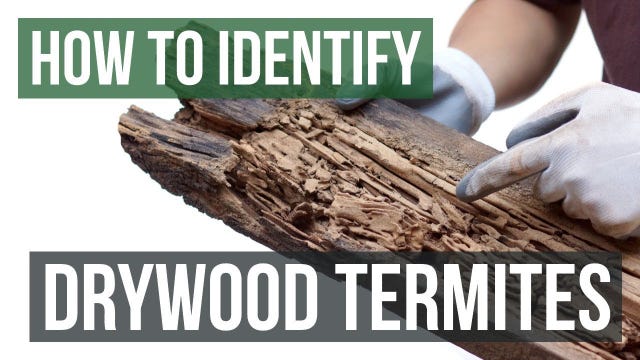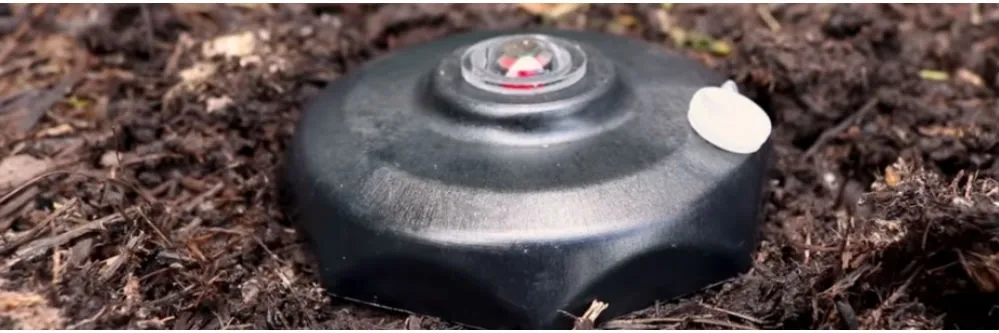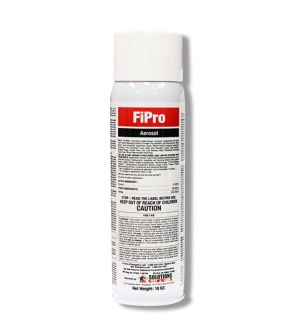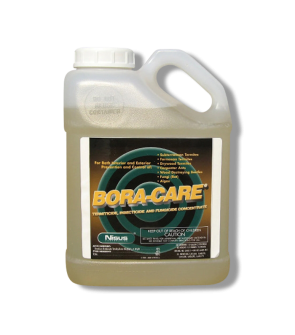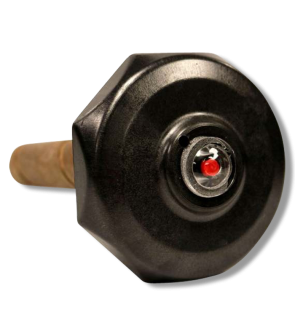Gain access to personalized product screening, the best pricing, rewards, and more!
Most Effective Products
7 Alarming Signs that You May Have Drywood Termites
This page is an expert guide on identifying and treating drywood termite infestations using the products and methods our experienced pest control specialists suggested. Follow this guide and use the recommended products, and we guarantee you will treat and eliminate dry wood termites.
It’s termite season, usually when cautious homeowners schedule inspections and check their homes for termites. The question is: why haven’t you done so yet? Are you secure in thinking your home is safe and termite-free?
Termites are a lot more clever than you think. The funny thing about the feeling of being certain you are free of termites on your property is that termites WANT you to think that way as they silently have their way with the tasty wood that makes up your home. One such species that is particularly problematic is the drywood termite.
Drywood termites, as their name suggests, primarily reside in conditions where they find dry wood. They can be found in the foundations of homes, windows, and door frames and may go undetected by the residents of the homes for ages. They frantically feed on any piece of wood found around the household, from floorboards to pieces of furniture.
Identification

Drywood termites are one of three termite types (the others being damp wood and subterranean termites) that commonly invade homes and buildings. Each termite has its own tendencies and habits, so it is important to distinguish dry wood termites from the others.
Within a termite colony, there are classes of termites: workers, reproductives (also known as swarmers or alates), and soldier termites. The worker termites make up most of any termite colony and largely look the same between the three main species of termite. So what mainly separates dry wood termites from subterranean Formosan termites and damp wood termites is the appearance of the alates.
The drywood termite alates two sets of wings that are the same length. The front set of wings has a special pattern of distinguishing and conspicuous veins in the outermost part of the front wings, of which about three or more can be seen. The alates shed their wings very quickly when they are in swarming mode. Because of this, whenever a dead swarmer is discovered, they usually do not have their wings attached to them. This is one of the main characteristics that makes the drywood termite swarms stand out from the subterranean termite swarms since subterranean alates will consist of dead swarmers that may or may not have wings still attached to them.
A few other traits that can separate drywood termites from the others are that drywood termite soldiers have larger-sized mouthparts with teeth to protect the colony against invaders or threats and a wider-than-normal pronotum that appears to be wider than their head. In addition, most dry wood termite soldiers and workers are larger in size than soldiers and workers in subterranean termite colonies.
Inspection
With the above description in mind, below are 7 surefire signs of dry wood termites infesting your home, as well as signs of termite destruction in the home's wood from the inside out.
1. Frass - Termite Droppings

A calling card left behind by drywood termites is termite frass – which is the fecal matter (or termite poop) termites push out of their galleries when tunneling and eating wood. Unlike subterranean termites, drywood termites don’t use their droppings to build their tunnels. Drywood termites like to keep their tunnels and nests nice and clean, so they push their feces out of small holes near the entrances to their nest.
This withdrawal of termite pellets results in small black marks and a dark powdery substance around the area they infest. Termite droppings can easily pile up and is an even bigger indicator of a serious drywood termite problem. Drywood termite droppings are very fine and look very similar to sawdust.
Drywood termites tend to build their colony nests underneath the eaves and roof shingles and may also set up shop between floors and ceilings in homes with more than one floor. We recommend inspecting the attic areas and around joists when possible and watching closely for any termite frass droppings left behind.
2. Clicking Noises

You may have seen enough closeup pictures of termites to know what they look like, but do you know what termites sound like? If you have an infestation of drywood termites (or any termite) and listen closely, you’ll discover that termites make quite a racket.
One sign of a severe termite problem is soft clicking sounds from the walls. This clicking may come from Soldier termites banging their heads against the wood or shaking their bodies. No, they haven’t lost their minds; they do this to alert the colony that there is danger afoot.
The worker termites are very noisy eaters. If you know of an area infested by these wood-lovers and listen in, you can hear those termites munching away.
So you now know that termites like to be noisy, but did you know that they also like the noise we listen to in our homes? What some may be surprised to hear is that termites love rock music! A recent study revealed this fact, concluding that termites' eating habits go into hyperdrive when they listen to loud music, particularly rock music, eating two times faster than without music.
This may be largely due to the sensitivity of termites, which can detect vibrations and noises using several organs found at the base of their antennae and on the tibia. Keep that in mind next time you decide to blast some tunes in your home. You're not the only ones jamming!
3. Flying Termites and Termite Wings
Another telltale sign of a termite infestation is the presence of flying termites known as swarmers or reproductives. These winged termites are the males and females that depart from the nest to find a mate and establish a new colony — which very well could mean an even bigger infestation in your home. These swarmers may be found at night or in the daytime, depending on their preferences and times of the year. Drywood termites, in particular, like to swarm after rainfall.
Discarded wings are another sign of a termite infestation. Swarmer termites (alates) lose their wings shortly after finding a mate. The new termite couple then crawls to a suitable nesting site where they seal themselves in to reproduce and start a new colony. The new king and queen then care for the first batch of their young until there are enough worker termites to take over caretaking duties.
Drywood termites swarm throughout the year to continuously grow their population, emerging from existing colonies through either an eave, the frames of a door or window, or from under roof shingles and getting right to work. So, when it comes to seeing wings or winged termites, if you see either of these signs, you should be very worried about a large infestation nearby within the confines of your home!
4. "White Ants"
People commonly mistake termites for white ants. This misconception is easy to make as ants and termites often resemble each other in shape, size, and occasionally behavior. While there are ants that are "whitish," like the ghost ant or the white-footed ant, these ants are only partially white. There is not a type of ant that is totally white.
So, how can you tell the difference between ants and termites?
- Termites are cream-colored and can sometimes look transparent.
- Termites have straight antennae compared to ants, which look bent.
- A termite's waist section is much thicker than an ant's. Ants have a more narrow abdomen.
- Both flying ants and termites have two sets of wings. However, termites are the same size as ants, with larger and smaller sets.
Again, the important thing to remember is that there are no species of white ants. If you think you have spotted an insect that looks like a white ant, you can pretty safely assume that it’s, in fact, a termite.
5. Hollow Wood
Drywood termites usually devour wood from the inside out, leaving a thin outer layer of timber or just the paint. When you knock or tap on an area that you suspect has termite damage, it will sound hollow or papery. This is because part or all of the timber inside has been consumed.
When drywood termites infest a piece of wood, whether it be furniture or some other wooden element of a home, they often develop their feeding galleries and devour all of the wood in a piece of lumber or sheathing to the surface of the wood. Because of this, drywood termite wood damage is usually detected and identified by seeing the portion of wood under the surface being almost totally consumed with just a mere thin, rippled layer of the painted surface left intact.
While the feeding galleries of a drywood termite infestation can be of various sizes, the larger galleries are usually connected by smaller galleries, making traveling between both types of galleries possible.
Some of the more common stories you might read about homeowners discovering termites are that a problem is only realized when a vacuum cleaner goes through a skirting board or a finger pressed into a door frame creates a hole.
6. Hard-to-close doors and hard-to-open windows
While it’s usually believed to be a sign of damp or hot weather, warped doors or windows that become stiff when opening and closing may mean a drywood termite problem. The moisture that termites produce when consuming wood and tunneling through the wood within doors and window frames causes wood to become warped, making it difficult to shut or open windows and doors.
So don't reach for the WD-40 to lubricate your door hinges when they feel tight and hard to open; you need to reach for some termite control products.
7. Wood Tunnels
The burrows made from termites, also known as termite galleries, may be difficult to view outside. But if you break a piece of broken wood in your house that has been infested, you will see tunnels created by the infestation of termites that are staying in your home. This can be easily done during a DIY termite inspection by taking a screwdriver and popping a plank off to check the underside.
To be able to tell that the tunnels were made from drywood termites rather than one of the other species, like the subterranean termites, you should check for mud or dirt. The presence of mud is a sign of a subterranean termite infestation. However, suppose the galleries and tunnels you find are free of mud and dirt. In that case, that is usually the work of drywood termites who never really go near dirt or mud because they don't need moisture, which subterranean termites are completely dependent upon.
Treatment
If you find termite activity in your home, you must act fast! Our top recommendation for treating drywood termites is treating infested wood with Boracare and FiPro Aerosol
Step 1: Wood Treatment with Boracare
If you have identified the drywood termite colony in a specific area, you will want to replace the damaged wood and treat the wood with a borate-based product called Boracare.
Boracare should be applied to bare wood and mixed in a bucket with warm water. Using a 5-gallon bucket, mix 1 part Boracare with 1 part water. It is recommended that you use hot water to mix with Boracare. Boracare is a very thick and viscous solution that needs to be mixed well and broken down.
Once mixed well, pour the mixture into a sprayer and spray the wood to wet. You can treat exposed wood behind sheetrock and/or up in the attic. Boracare will penetrate the wood and kill termites as they feed.
Step 2: Drill and Fill Treatment Using FiPro Aerosol
Fipro Aerosol is a foaming aerosol that contains the lethal active ingredient Fipronil, which has proven to be very effective against termites. Apply Fipro Aerosol Foam into any exposed termite galleries, voids, cracks and crevices around windows, doors and fireplaces. Fipro aerosol is a foam and it travels very easily through termite galleries which actually provides good deep penetration.
For infested wood, attach your drillbit and drill holes into the wood where the nest is located. Holes should be drilled 8 to 10 inches apart around the entire piece of wood. Then, fill the holes with Fipro Aerosol foam. Close up the holes made in the wood using a wood patch or other type of wood sealant material with a paintbrush or similar spreading tool.
Prevention
To prevent drywood termites from accessing your home after you have eliminated them, preventative treatments of Boracare should be conducted on all exposed wood, including the exterior up underneath the house and the floor joists.
It would be best to use Red Eye Termite Monitoring Stations to monitor termite activity. While the Red Eye Station is not specifically designed to control drywood termites, it is a good tool for general termite prevention.
Place multiple Red Eye stations around the home, 10 feet apart. When there is termite activity, the Red Eye indicator will disappear, and then you can treat termites accordingly by injecting Fipro aerosol into the station. Check the Red Eye Stations once a month to keep dry wood termites from coming back.
Key Takeaways
What is a Drywood Termite?
- Drywood termites are a species of termite less commonly encountered than subterranean termites, but they can be just as damaging if they aren't detected and treated quickly.
What are some Drywood Termite Signs?
- Signs of drywood termite activity include clicking noises, termite wings, the appearance of "white ants," hallowed wood, hard-to-close doors and hard-to-open windows, wood tunnels, and frass (termite sawdust-like droppings).
How To Eliminate Drywood Termites
- Drywood termites can be successfully treated with Boracare and Fipro Aerosol.






